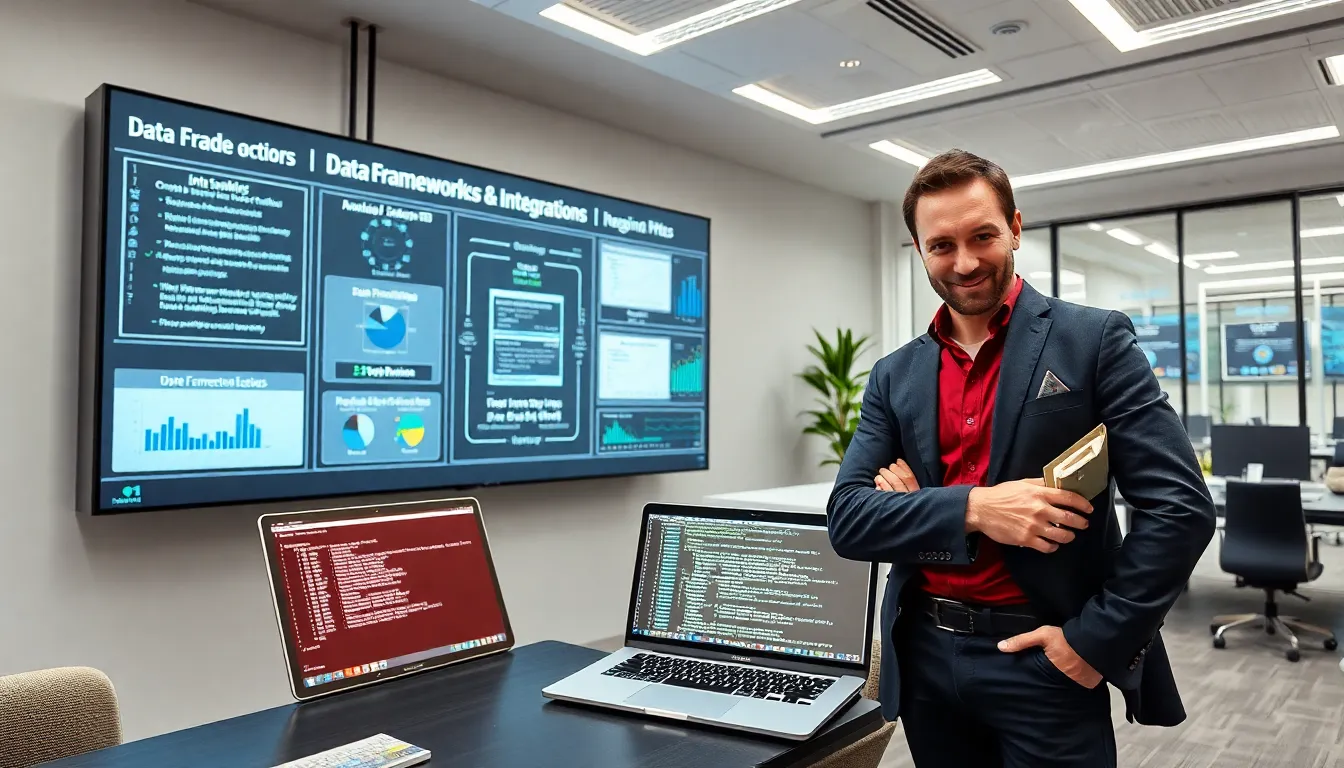Table of Contents
ToggleRemember the first time you realized that your phone can take pictures and also tell you what color your cat is? Welcome to the world of retrofitting legacy systems. In the realm of technology, where even your toaster is going smart, legacy systems can feel like that ancient flip phone. They still get the job done, but wouldn’t you rather have the latest gadgets in your toolbox? This guide explores the Retrofit Legacy WebBizMagnet PLC Python library, helping you upgrade your tech without very costly, or a sweat.
Understanding Legacy WebBizMagnet Systems

When discussing legacy WebBizMagnet systems, it’s essential to grasp what they are and why they exist. These systems are often foundational, built in the early days of web development. They served businesses well in their time but now can feel outdated as technology advances. Imagine having a trusty old pickup truck that still runs smoothly but lacks modern features, no GPS, no air conditioning. You understand its value, but it’s time to modernize.
Legacy systems in organizations often rely on specific workflows and data structures. They might run on outdated programming languages or frameworks, making integration with modern technologies a challenge. The complexity of these systems can lead to resistance when considering upgrades. After all, why change what’s working, right?
But, without an upgrade path, businesses may face issues with scaling, security risks, and maintenance costs. Recognizing these challenges provides a compelling argument for retrofitting: maintaining functionality while bringing systems into the current era.
The Importance of Retrofits in Modern Development
Retrofits are crucial for modern development, and here’s why: they blend the old with the new, breathing fresh life into existing systems. Instead of tossing out the baby with the bathwater, organizations can retain critical business logic while enhancing performance and security.
Why is this so beneficial? First, retrofitting can significantly lower costs when compared to a complete system overhaul. Many businesses operate on tight budgets: reallocating resources to enhance existing systems can deliver more immediate returns. Plus, as technology evolves, user expectations grow. Clients expect systems that are user-friendly and efficient, not clunky relics from the past. A retrofit ensures that organizations keep pace with these demands.
Also, retrofitting can foster innovation. By integrating newer technologies into legacy systems, organizations may discover new ways of addressing customer needs, improving productivity, and exploring emerging markets. It’s about transforming your existing framework into a future-proof operation.
Overview of the Python Library Architecture
Diving into the Retrofit Legacy WebBizMagnet PLC Python Library, it’s vital to understand its architecture. The library is designed with scalability and maintainability in mind, allowing developers to work flexibly without disrupting ongoing operations.
Key Features of the Retrofit Library
The Retrofit library comes loaded with features tailored for legacy systems. Firstly, it supports a variety of protocols, enabling it to communicate with different data sources seamlessly. Secondly, its modular structure offers developers the flexibility to build only what they need, reducing bloat in the application. Finally, intuitive error handling and debugging tools simplify troubleshooting so developers can focus on innovation rather than firefighting.
Installation and Setup Guidelines
Getting started with the Retrofit library is straightforward. Developers can easily install it using Python’s package manager, pip. After installation, a quick setup process ensures that users can connect the library to existing WebBizMagnet systems. Clear documentation guides users through configuration, making it user-friendly for both seasoned programmers and novices alike.
Common Use Cases and Applications
The Retrofit Legacy WebBizMagnet PLC Python library serves various applications, catering to several business needs.
For instance, many organizations use it to automate data migration from outdated systems to modern platforms, reducing manual data entry errors and saving time. Another common application involves integrating legacy systems with cloud-based services, enhancing accessibility and collaboration.
Also, retrofitting can support building new applications that interact with legacy databases, enabling businesses to leverage their existing data while adopting modern best practices. Whether it’s improving customer relations through CRM upgrades or expanding analysis with data-driven insights, Retrofit opens doors to possibilities.
Best Practices for Using the Retrofit Library
To maximize the benefits of the Retrofit library, developers should consider best practices during implementation. First, it’s wise to conduct a thorough assessment of existing systems. Understanding the intricacies can help identify areas that benefit most from retrofitting.
Second, staggering retrofitting efforts can minimize disruption. Instead of overhauling everything at once, making gradual changes allows teams to adapt and respond to issues without jeopardizing system integrity.
Documentation is key in any development process. Maintaining clear, up-to-date documentation ensures that current and future developers can easily navigate and understand changes made within systems. Finally, consistently testing new features will help mitigate errors before they impact users.
Troubleshooting and Support Resources
Even the best libraries face challenges, so having resources comes in handy. The Retrofit community offers robust support through forums and documentation. Developers can tap into collective knowledge, sharing experiences and solutions to common problems.
Besides, many online platforms provide reputable tutorials and guides. These resources cover everything from installation to advanced use cases, ensuring developers can find help when needed. For specific technical issues, consulting with the library’s maintainers or contributing to its development can foster improvements and new features.



